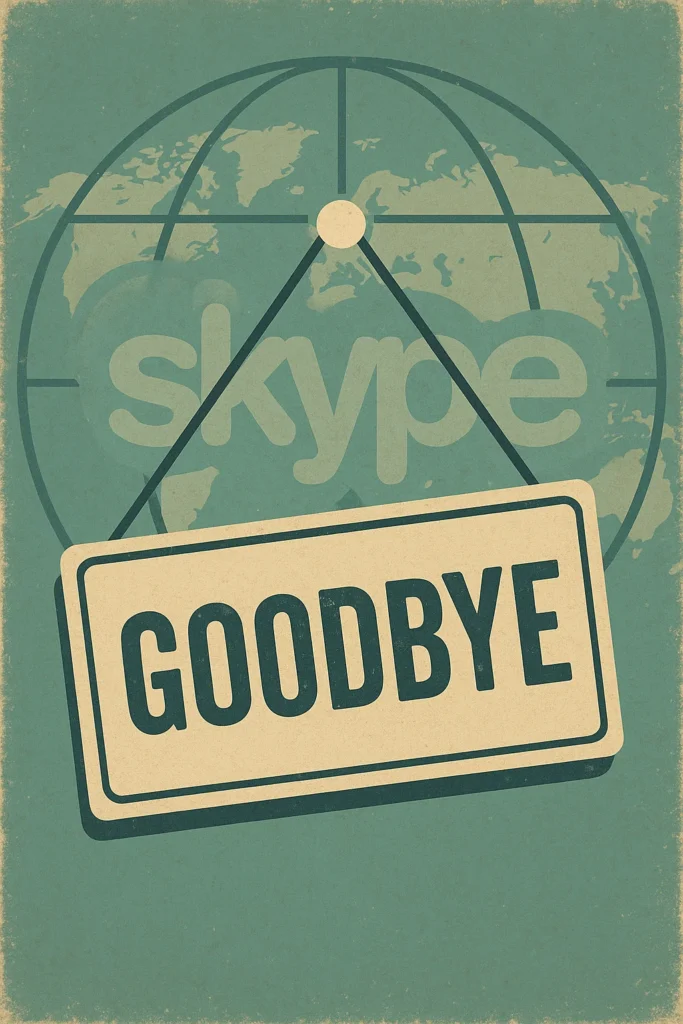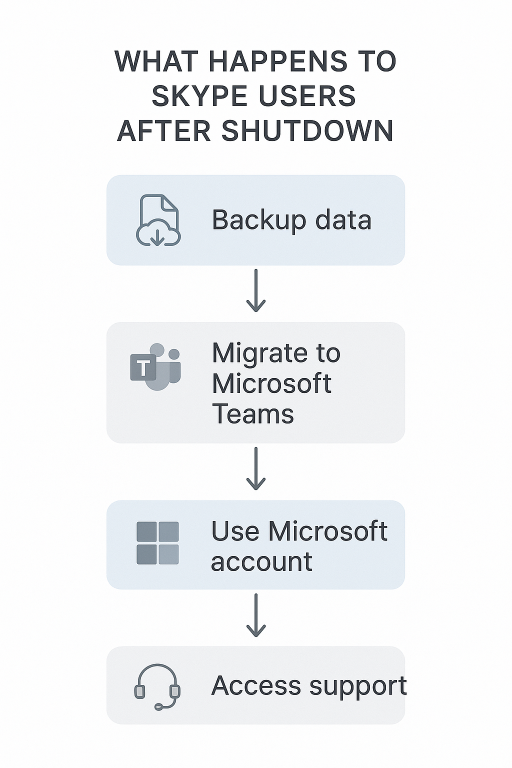
Skype, the pioneer of using the internet for voice and video calls, is at long last bidding farewell. After almost two decades of bringing people from around the world together, Microsoft has said that Skype would be discontinued and phased out over time and supplanted with other forms of communication, marking the end of an epoch in communications technology. With the departure of the legendary platform, people are turning to alternatives that could take its place. But before we see who is next, it is time to look back at Skype’s story, its capabilities, and why it fell out of favor. Keep reading to find Skype alternatives in 2025.

A BRIEF HISTORY OF SKYPE
Skype was started by Sweden-based Niklas Zennström and Denmark-based Janus Friis in 2003, with software provided by Estonian programmers Ahti Heinla, Priit Kasesalu, and Jaan Tallinn. Skype became a huge hit as a peer-to-peer-based platform where people could use voice calls over the internet at no extra charge. This was a breakthrough at a time when international and long-distance calls were expensive.
In 2005, Skype was purchased by eBay for $2.6 billion, and Microsoft bought it for a whopping $8.5 billion in 2011 with a plan to add it to its line of products and make it the go-to tool for communication on Windows devices. Skype became so synonymous with video calls that for a while, it was hard to imagine life without it. It became an indispensable part of our lives, both at homes and workplaces across the globe.
Key Features Skype Provides
Skype was full of functionalities that made it versatile and easy to use:
- Voice and Video Contacts: The primary function of the platform enabled people to talk face-to-face or even by voice, usually with full view and with a minimal delay.
- Group Calls: Multiple participants could be made to join a conference call.
- Instant Messaging: Skype had a built-in chat option for text conversations in real time.
- Screen Sharing: It was particularly helpful within organizations for presentations and troubleshooting.
- File Sharing: People could quickly share documents, photographs, and movies.
- Call to Mobile/Landline: With Skype credit or subscriptions, people were able to call actual telephones globally.
- Skype Number: It provided customers with a way to buy a local number for different countries.
In spite of this comprehensive feature list, Skype slowly fell behind newer competitors with streamlined designs and improved integration with other applications.
Why Skype is Closing Down
Skype has had a steady decline. Despite attempts by Microsoft to give it a modern facelift by incorporating a new look and new features, it could not match more nimble and innovative rivals. Zoom, Microsoft Teams (bitterly ironically, from Microsoft as well), WhatsApp, and Google Meet started to take over the space, particularly with the COVID-19 pandemic thrusting video conferencing into the limelight.
Microsoft has at last decided to retire Skype to concentrate on Teams, which has seen tremendous growth, especially on the business and education fronts. Skype is being phased out, with phased end-of-support dependent on region and user base. Users are being encouraged to migrate to Microsoft Teams or other alternatives.

What Happens to Skype Users Now
Skype is currently taking its existing users on a transition journey:
- Data migration: The customers are able to migrate their chats, contacts, and media prior to a final shutdown.
- Guided Transition: It is inviting people to migrate to Teams with tutorials and migration tools.
- Account continuity: With both Skype and Teams utilizing Microsoft accounts, the transition is quite easy.
- Customer Support: Microsoft is offering temporary customer support for transition-related issues
Though a drastic change, particularly for older users, it provides a gateway to a series of newer communication tools.
Top Alternatives to Skype
Here are three top contenders that provide similar — or even better — capabilities than Skype:
Zoom
- Overview: Zoom came to the forefront during the pandemic and is still the solution of choice for webinars and online meetings.
- Features:
- High-definition video and audio calls
- Breakout rooms
- Virtual backdrops
- Webinar hosting
- Integration with other productivity tools
- Pros:
- High video resolution
- Supports large-scale meetings with a maximum of 1,000 participants
- Stable connection
- Drawbacks:
- Restrictions on free plan functionalities (40-minute group meeting time limit)
- Less intuitive to use
Rating: 8.5/10
Zoom is strong on video conferencing and is suitable for corporations and schools, but is weak on deep integration with chat and general consumer appeal.
Microsoft Teams
- Overview: Microsoft Teams is at the center of Microsoft’s collaboration strategy. It is highly integrated with Office 365.
- Features:
- Text chat with threading and reactions
- Video calls and voice calls
- Shared file collaboration using OneDrive
- Calendar integration and scheduling
- Bots and custom apps
- Pros:
- Seamless Office 365 integration
- Ideal for companies and schools
- Secure and scalable
- Cons:
- It may be daunting for new players
- Overkill for informal conversation
Rating: 9/10
Teams is a juggernaut, particularly for those already within Microsoft’s ecosystem. It mimics and builds on Skype’s capabilities.
Google Meet
- Overview: Google Meet is a part of Google Workspace and provides a simple, light-weight video calling experience.
- Features:
- Video conferencing with encryption
- Integration with Google Calendar and Gmail
- Real-time captions
- Background blur
- Screen sharing
- Pros:
- Works directly from a browser
- Minimal and uncluttered interface
- Full integration with Google services
- Cons:
- Fewer advanced features compared to Zoom or Teams
- Limited customization
Rating: 8/10
Google Meet is ideal for those who want simplicity and utilize Google services already. It is missing some sophisticated collaboration features but provides reliable performance.

Final Thoughts
Skype retirement might be a bittersweet experience for those who depended on it for long-distance relationships, international business, and countless other purposes. But where innovation happens quickly in a technology world, even the giants fall behind. Microsoft’s move to retire Skype is a sign that communication tools develop naturally over time, and there are plenty of options for consumers to choose from, some far outpacing Skype on performance and capabilities.
Whether it’s professional-grade collaboration (Microsoft Teams), simple video calling (Google Meet), or enterprise-sized virtual events (Zoom), there’s a platform that’s poised to take over where Skype left off — and with a lot more.

1 thought on “Skype Bids Adieu: The End of an Era and What Comes Next”